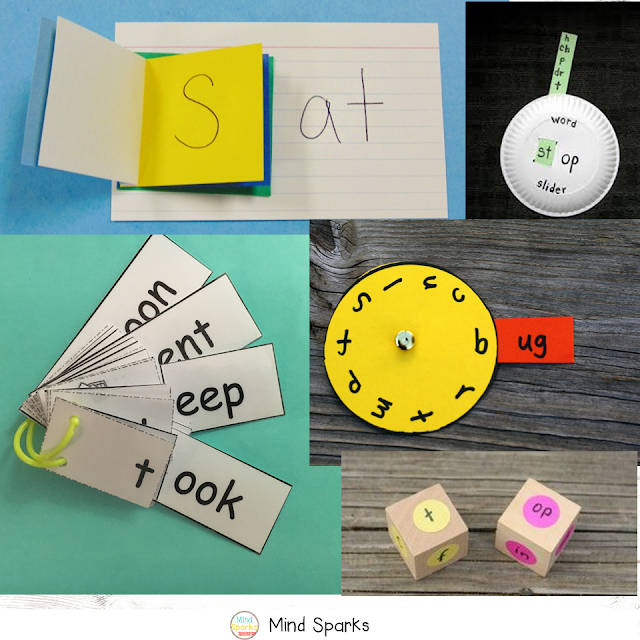Teaching word families can be tricky! Most of us never took a class in college which covered effective reading instruction...AND as elementary teachers we have more than just one subject to devote our time to studying.
Plus there are so many questions we can ask ourselves...
- When should I start word family instruction?
- What word family should I start with?
- What is the best way to teach word families?
- What are the best word family activities, games and worksheets?
- How long do I teach word families before we move on to another phonics skill?
Some teachers may just be winging the whole "word family thing," Teachers are simply doing the best they can with the tools they have in their toolkit. So, it seems reasonable that we might be making a few mistakes. The good news---common mistakes are easy to fix!
Keep reading to find out the top 5 mistakes teachers make with cvc word family instruction, AND what you can do to fix those mistakes!
1. Beginning before kids are ready
Dr. Linnea Ehri has done extensive research within the realm of reading and spelling acquisition. In Ehri's body of research, she concludes that word families come AFTER letter-by-letter decoding.
Students must master the sound-symbol association of letters in our alphabet. This means students need to have letter sound mastery before their brains are ready to begin word family instruction.
2. Starting with long vowel word families
There are MANY word families you can teach children, but don't start with long vowel word families (i.e. ain, ake, ame, eet, ice, etc. ). In The Timing and Teaching of Word Families, Dr. Francine R. Johnson says starting word family instruction with short vowel word families (CVC word families) is the best choice.
Typically students in this stage of reading development are not aware of silent letters or vowel teams that are needed to represent long vowels.
3. Not using data
It is always important to track student progress, and word family mastery is no exception. Many students will pick up on word family patterns quickly and will be ready to progress to phoneme blending (letter by letter tasks, ex: c-a-t).
Make sure you aren't holding students back from progressing along the phonics continuum by continuing with word family instruction when they are clearly ready for the next phonics skill.
Check out Reading Rocket's Assessment In Practice article, as it has great links to various reading assessments you can use with your students.
4. Zero Application
Don't just teach word families in isolation! Make sure you include word families within word study by helping kids discover word families in other places.
For example once the word family -at is auditorily and visually mapped it can be used to read and spell numerous one syllable words like cat, chat, flat and spat. A great idea is to point out studied word families in shared reading, or have kids find word family words within their own text.
In addition /-at/ is a syllabic chunk in larger words like category, acrobatic and problematic. Students likely won't be able to read these multi-syllabic words, but it is advantageous to show students how small chunks (word families/rime units) help create larger words.
5. Not using a multisensory approach
When we make instruction multi-sensory and fun; retention soars.
Make sure to include multisensory activities which engage more than one sense at a time. For example moving a letter tile while also saying its name and sound. Or, saying the letters as you are writing them. Give students a chance to use sight, sound, movement and touch.
Keep kids engaged with fun games like Roll, Read and Color, Slap Words or Color by Codes. Add pyramid sentences or decoding drills to literacy centers.














